Iran's Deserts | Ultimate Guide + Pics
Deserts are among the most fascinating natural habitats around the world.
Their distinct eternal beauty caused them to be quite attractive to tourists. Although the feeling of tranquility is one of the prominent attractions of these habitats, life flows through all that is visible in the deserts.In Iran’s deserts, which are abundant and vast as well as unique, a variety of biodiversity can be found, alongside its spectacular barren deserts. Also, you can experience enjoying many amazing activities such as walking on golden sand dunes, visiting the friendly and kind local people, and on top of that, sleeping under the starry sky at night which will be an unforgettable scene in everyone’s life.
You can find related tour packages in Iran Adventure Tours and Iran Desert Tours categories.
Most Wonderful Deserts in Iran
Basically, the desert is created in conditions where the land is under the severe influence of salt and the amount of absolute annual evaporation and transpiration is greater than the average amount of annual precipitation. It is because of such conditions that deserts are formed in arid and semi-arid, desert and semi-desert regions. In Iran, there are Qom Desert, Hajj Ali Qoli Desert, Dasht-e Kavir Desert in the dry region, Abarkuh Desert in the semi-desert region of Yazd, and Lut Desert in the desert region.
The best time to have a trip to the deserts of Iran is Fall and Winter which are scattered all over Iran, especially in its center. It is worth mentioning that, when traveling to Iran with the destination of its deserts, you need to be guided by a professional and well-equipped local guide. Here, the best deserts of Iran are briefly introduced.
1. Varzaneh Desert
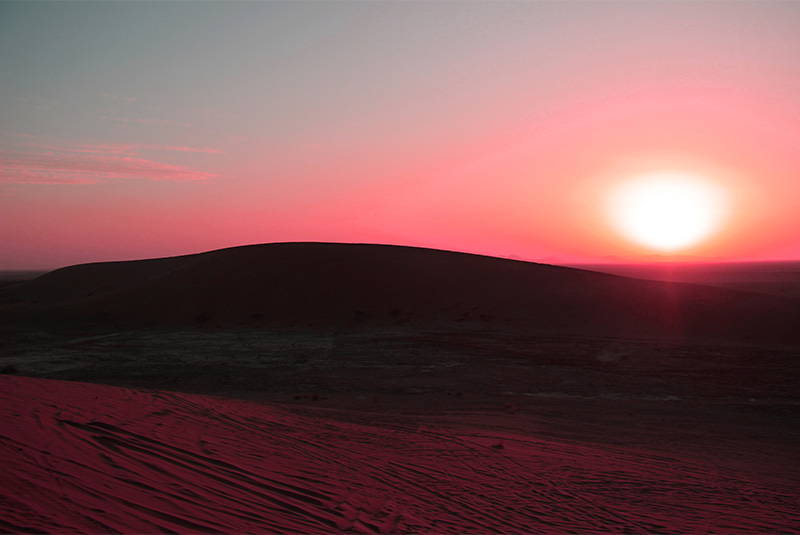
One of the attractions of the central region of Iran is the Varzaneh Desert, which has an area of about 17000 acres and is adjacent to a city of the same name. In fact, the name of the desert, which is Varzaneh, is due to the name of this city. In addition, the location of the Varzaneh Desert is about 100 km east of Isfahan and 150 km west of Yazd. Moreover, the Gavkhuni Wetland is located in the east of the desert, Varzaneh City and the Zayandeh-Rood River are located in the north of the desert, Hasan Abad is in the south, and finally, in the west of the desert is the road of Hasan Abad to Varzaneh City. Although the entire Varzaneh Desert is also known as the Khara Desert, there is an obvious difference between the loose dunes of the Khara Desert, which is located at the end of the Varzaneh Desert as well as is not suitable for desert trekking, and the Varzaneh Desert which is the largest recreational desert site of Iran.
It is worth mentioning that the difference between the Varzaneh Desert and the other deserts of Iran is the blowing of the winds in this region, which has caused the sand dunes to have special shapes such as longitudinal, crescent and pyramidal, which creates a spectacular scene. Plus, the Gavkhuni Wetland and the Salt Lake are among the attractions of the Varzaneh Desert, along with activities such as walking on the hot sands of the desert, off-road desert journeys (SUV riding), zip-line and camel riding. Note that there is no water in the wetland during the hot months of the year.
| Discover: Why Explore Iran's Ecotourism Wonders
2. Lut Desert
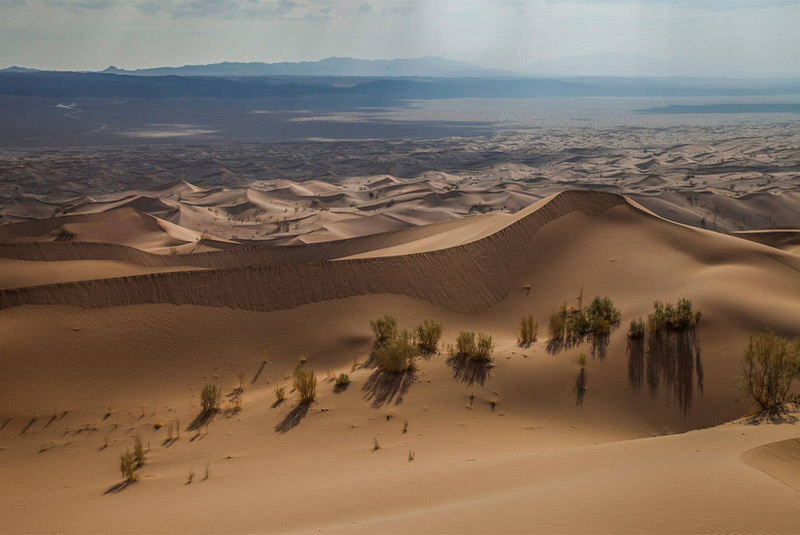
Lut Desert is a vast desert located in the southeast of Iran and is one of the hottest and driest deserts in the world. Also, this desert is in the middle of the three provinces of Kerman, South Khorasan, and Sistan and Baluchestan. On top of that, since 2016, this desert has been registered as Iran’s first natural monument in the UNESCO list. Note that the Lut Desert is the 25th largest desert in the world.
The Lut Desert is literally barren of water and vegetation as well as has an extremely hot and dry climate, so that in 2005, one spot in this desert was recorded at a temperature of 159.3 degrees Fahrenheit which was the hottest spot on Earth at that year.
It is interesting to know that, in spite of the harsh weather conditions for survival and life, there are plants and animals that can live there. One of the plant life of the Lut Desert is a phenomenon called "Nabkha". The wind in the desert always carries some dirt and sand with it. This soil and sand sometimes stop moving in contact with plants and accumulate around the plant. Desert plants use underground water to live, as a result, the soil and sand around the plant absorb moisture. The Nabkha Plant, which wants to survive, finds its way out through this soil and sand. Gradually, the plant is mounted on the sand, and the soil and sand remain in the form of mounds at the foot of the plant. Researchers and desert scientists consider Nabkhas as an important obstacle against surface winds and desertification, which have the potential to be used a lot.
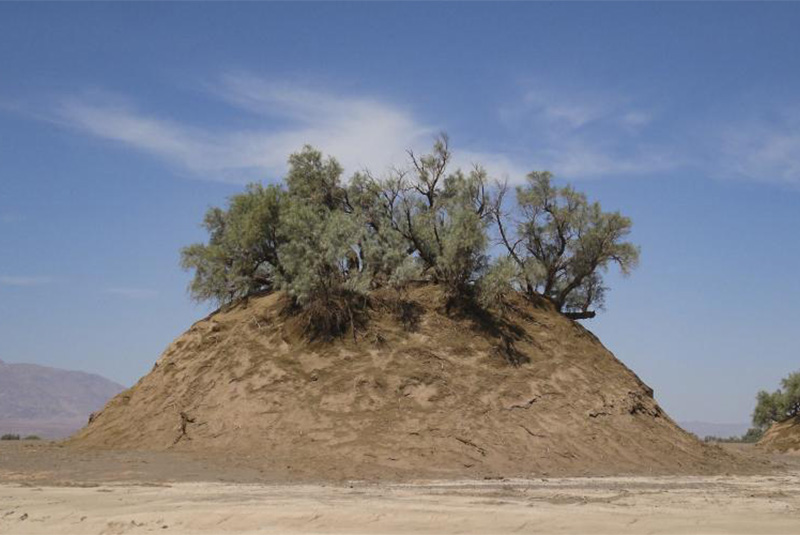
In the end, the Lut Desert is divided into three different geographical units. The different parts of this desert include the Northern Lut, which has elements and roughnesses of grit and sand, the Central Lut, which is the most amazing part of the Lut and includes Kaluts (one of the most unique phenomena), hills and huge sand dunes, and eventually, the South Lut, which has the richest flora in this desert. What's more, this desert has wonderful geological values. The Lut Desert is probably the most picturesque desert in Iran. And it is worth noting that you should not miss the amazing sunsets and sunrises of the Lut Desert.
| Read the full article: Lut Desert - The Hottest Place on Earth
3. Shahdad Desert (Kaluts)
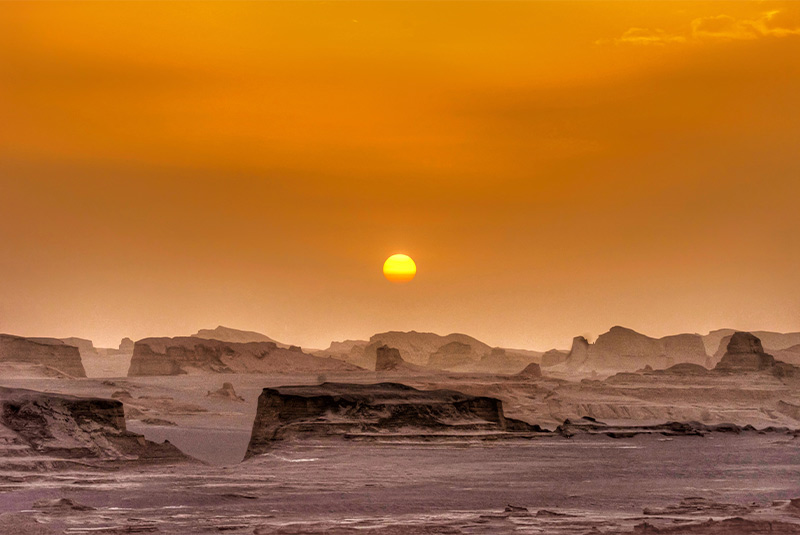
One of the most spectacular views belongs to the Shahdad Desert, whose Kaluts create the most wonderful and amazing scenes that one can have ever seen in their life. It is worth mentioning that a similar phenomenon exists in the state of Utah, in the United States of America which both emerged due to water and wind erosion. Shahdad Desert is located near Kerman and is part of Lut Desert, and has a variety of recreational activities as well as includes one of the hottest spots on the Earth. Also, the strong winds in this region have led to removing any roots of plants and hence the lack of vegetation in the Shahdad Desert.
Furthermore, the Shahdad Desert is divided into three parts; green, orange, and red. The green region is located next to the Shahdad-Nehbandan road and in the safest part where you can go alone or with your friends and family. Whereas the orange and red parts of this region are in many aspects so dangerous, such as getting lost along with other hazards; so you should not go there alone and without an official permit and a professional guide.
Since the most outstanding part of the Shahdad Desert is Kaluts, it deserves some words here. This unique phenomenon called Kaluts is one of the rarest geographical phenomena registered in the UNESCO World Heritage List. The name Kalut is derived from Kal and Lut, Kal means city or oasis and Lut is related to the Lut Desert; the scientific term of Kalut is Yardang. These natural sand castles are built by nature, in consequence of erosion, and their most effective erosion factors are water and wind.
The bedrock of the Kaluts has been eroded by sand winds, and its loose elements have collapsed under the pressure and turbulence of the wind over time, and the Kaluts have formed slowly. From this point of view, Kaluts, which are into account as one of the most important attractions of geotourism, are actually ancient works. Shahdad's Kaluts are formed in an area of eleven thousand square kilometers. This natural phenomenon was created about 20,000 years ago due to water and wind erosion. These aquatic wind erosion clusters, which are stretched from north to south, are about 145 km long and their width reaches 70 km from west to east.
| Read the full article: Shahdad with Magnificent Landscapes of Kaluts
4. Maranjab Desert
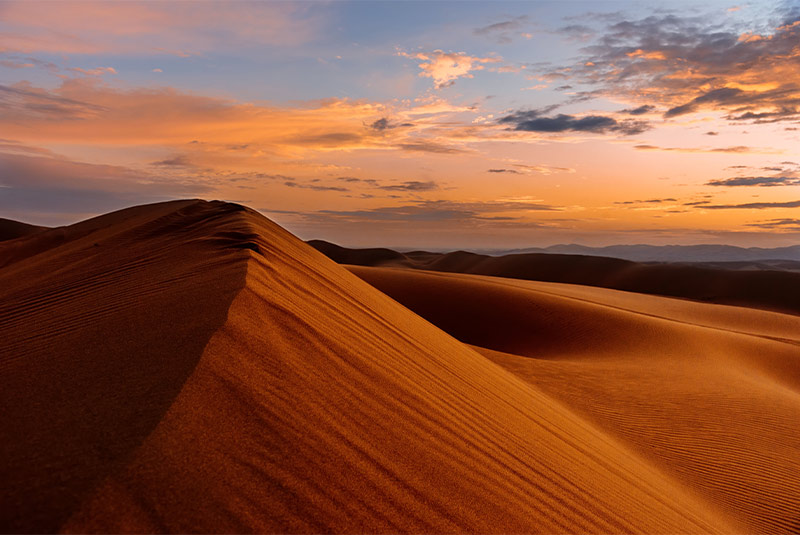
Maranjab Desert is located in the north of Aran va Bidgol City near Kashan in Isfahan Province. Additionally, north of this desert is Aran va Bidgol Salt Lake, and at its east are the Band-e Rig Desert and Desert National Park, also, Masileh Desert, Hoz-e Sultan Salt Lake and Moreh Lake are located in the west of the Maranjab Desert, and finally in the south of this desert is the city of Aran va Bidgol.
Because of safety, as well as the variety of attractions in addition to the flora and fauna of this region, the Maranjab Desert is a suitable place for tourism and also can attract many tourists every year. Actually, this desert was located on the Route of the Silk Road, and as a result, it was one of the favorite places during the Safavid Dynasty. According to that, Safavid Shah Abbas chose the name Maranjab for this desert.
Along with camel riding, walking on the sand dunes, off-road and other common activities in deserts, you can visit the unique attractions of the Maranjab Desert. One of them is the Salt lake which is a natural attraction of this region and is located close to the Maranjab Caravanserai. Further, the name of this Salt Lake is Aran va Bidgol, and also is famous as the Sargardan (Wandering) Island. This name is due to the mirage and optical illusion that occurs in this desert, which was unknown by the ancestors. Moreover, the water of this lake has evaporated little by little and a white line has remained on the ground. The combination of the desert and the Salt Lake has created a spectacular view that can be amazing as well as the high sand dunes and the wonderful night sky of this desert.
Another attraction of the Maranjab Desert is its caravanserai whose name is the same as the desert, Maranjab. This caravanserai was built by the order of Shah Abbas of Safavid and the inscription on the head of this caravanserai states that 500 armed soldiers were always present in this place. Also, it has 29 rooms intended for tourists to stay in the Maranjab Desert. In addition, there is a pond that is located in the south of the caravanserai which is bounded by willow and tamarisk trees, and a spring near the lake supplies its water.
| Read the full article: Maranjab Desert - A Spectacular Natural Attraction in Iran
5. Mesr Desert
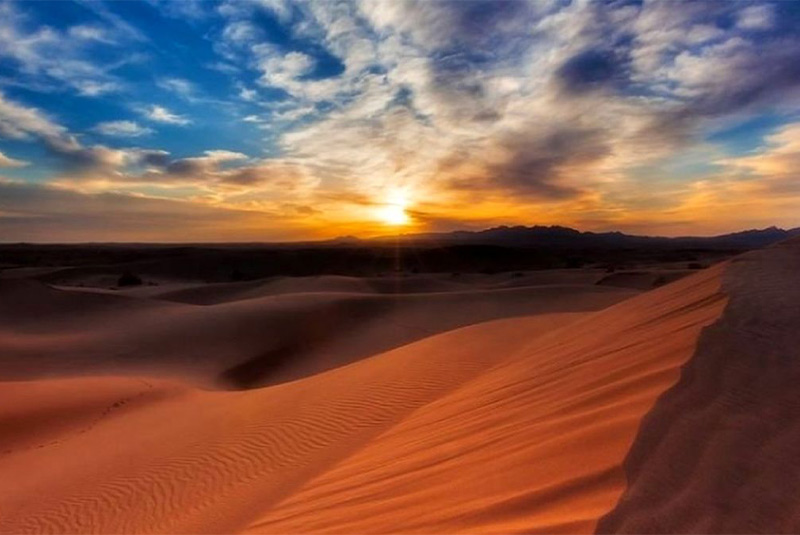
One of the most beautiful deserts in Iran is the Mesr Desert, which is located in Khour va Biabanak County and is close to clay Village of Mesr in Isfahan Province. This desert is suitable for activities such as walking through quicksand, camel riding, motorbikes, safari, watching the sunset, and on top of that, spending the night sitting around the campfire and watching the stars in the sky is one of the most popular pastimes in this area. Mesr Desert is located 45 km east of Jandaq City and 30 km north of Khour. Moreover, the Mesr Desert had other names in the past, Chah Deraz, Kalateh-ye Yusof (Joseph's Kalateh), and Mazrae-e Yusof (Joseph's Field). In fact, this desert is located in the Dasht-e Kavir.
It is noteworthy that not only does the Mesr Desert in summer has very hot and unbearable weather, but also the animals like snakes, tarantulas, scorpions and etc. come out during this season. Also, the Mesr Desert is known as the sandy sea of the Mesr Desert and Mesr is the Arabic word for Egypt. Furthermore, Mesr Village is alongside other small villages; their names are Amirabad, which is located 2 km away from Mesr Village and consists of sandhills next to many tamarisks and attractive palm trees, as well as Farahzad, which has tall palm groves. When visiting the Mesr Desert, a visit to the rendezvous of star lovers, the magnificent Village of Aroosan (brides) is highly recommended.
| Read the full article: Mesr Desert in Iran
6. Matin Abad Desert Eco-Camp

Matin Abad Desert Eco-Camp is located 25 km north of Natanz and 60 km southeast of Kashan. Matin Abad Desert Eco-Camp was established as the first natural eco-camp in Iran based on sustainable tourism and on the basic principles of sustainable ecotourism.
In addition, the experience of walking on slippery sands, stargazing, camel riding, seeing organic farms, and watching horses and ostriches breed at Matin Abad Desert Eco-Camp is waiting for you, in this desert which is suitable for amateurs.
| Discover: Iran's Wildlife | A Nature Lover's Guide + Pics
7. Rig-e Jenn
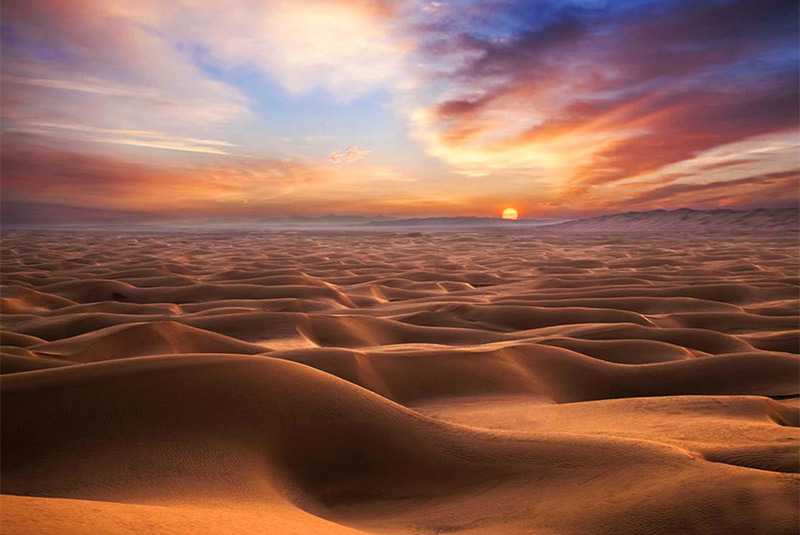
Rig-e Jenn Desert is located in the border region of the Semnan and Isfahan provinces. The lack of water resources in the vast area of Rig-e Jenn along with the presence of natural barriers such as salt marshes and high sand dunes were the factors that have kept this area away from human access for centuries. These factors have caused this vast area to remain hidden from the eyes of humans throughout history, and as a result, they named it the Jenn. The word Jenn means hidden.
There is no clear border for Rig-e Jenn; Briefly, this area is located in the geographical area of central Iran in the western part of the central desert or the Dasht-e Kavir; it reaches from the north to the road from Semnan to Moalleman, from the west to the Kavir National Park, from the to east the road of Jandaq to Moalleman, and from the south to Anarak to Choopanan. The expansion of Rig-e Jenn is from northwest to southeast and has an area of about 90,000 square kilometers.
| Discover: Iran's Top 14 National Parks Every Tourist Should Visit
8. Halvan Desert
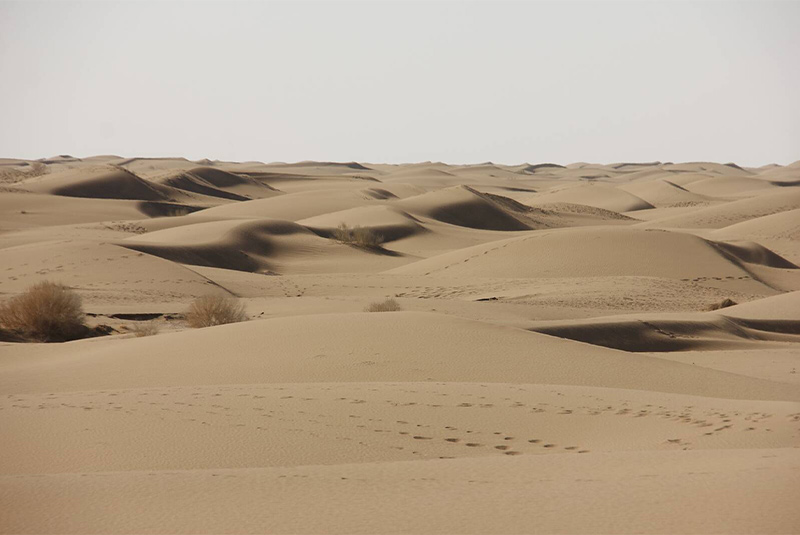
Halvan Desert is a pristine spot in South Khorasan, near the Halvan Village in Tabas City, and it is a destination for adventure. The shape of the Sabulous of Halvan is triangular and it is registered in the Natural Monuments list of Iran. Also, the Halvan Desert has located 4 km from the Pir Hajat Altitudes that are in the north, Asheghan Altitudes are in its east, and Khour Salt Lake is 118 km west of this desert; finally, 36 km south of the Halvan Desert is the route of Khour. In other words, Dasht-e Kavir surrounds the Halvan Desert from the north and west. In addition, due to the presence of numerous mines in this desert and therefore several dirt roads, the Halvan Desert is one of the easiest places (routes) for safari among the deserts in Iran.
Moreover, the recreational activities and attractions of this region are not limited to walking on the sand dunes and stargazing. Indeed, Halvan Desert has also palm groves and salt swamps which are breathtaking sceneries. Afterward, passing through the historical allays of Halvan Village with its unique architecture you can reach Halvan Castle, which is the most important attraction of this village.
9. Darak Desert

Darak Desert has one of the most striking places as the desert and sea meet exactly in this region. Darak Desert is located near a village owning the same name and is among the cleanest beaches in Iran because of its uniqueness. Also, its pristine is due to the fact that tourists do not know this place very much. In light of that walking on sand dunes alongside the sound of waves can be an incomparable experience.
This meeting between the desert and the sea is only one of the wonders of this piece of land. This desert is located where the sea of Oman reaches the Indian Ocean and the turquoise waters of the Sea and the Ocean combine at this point of open water, and along the coast creating a fascinating landscape. Darak Desert is located in Sistan and Baluchestan Province and between the two important ports in Iran, Bandar Abbas and Chabahar. Moreover, the name Darak in the local language means living by the sea. Further, the best time to have a trip to this area is highly recommended to be in March owing to the presence of glowing plankton along the shores that create a dazzling sight.
Furthermore, Darak Village which is adjacent to the Darak Desert is located along the coast of the region of Makran, the Konarak County, 170 km west of Chabahar, as well as 120 km from Konarak. This pristine village includes rocky, sandy, and coral shores, which are all close to each other and add to the attractions of this region. Among the other wonders of the Darak Village are pure and fresh water wells while they are next to the salty sea, and caused an astonishing phenomenon.
It is worthy of note that recreational facilities are provided for activities such as swimming, surfing, boating, and water sports along with activities related to journeys in the desert, like desert trekking, stargazing, and a few more.
| Read the full article: Darak Beach - The Intersection of Desert and Sea
10. Seh Qaleh Desert
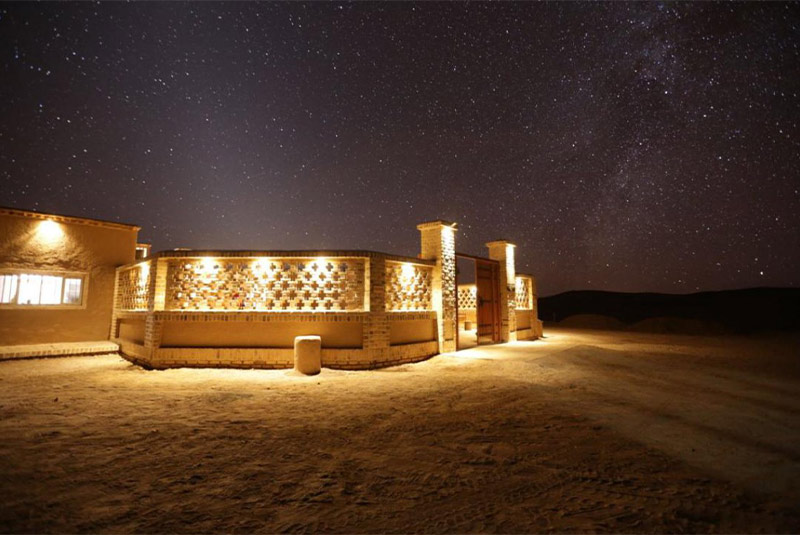
Seh Qaleh Desert which means Three Castles is a particular desert which is located in the east of Iran, 37 km from the city of Sarayan, and around the Seh Qaleh City of South Khorasan Province. One of the special features of this desert is its open horizon and dark sky; the geographical location of Seh Qaleh Desert is so that it is out of the path of the local dust and therefore, there is an open horizon of about zero degrees at the sky observation site. Moreover, among other features of this region, we can mention security as well as historical places such as robat, caravanserai, salt lake, daq (flat and hard land without any vegetation), and tapeh mahour (moorland).
Seh Qaleh Desert due to the low altitude based on the sea level is considered a desert and semi-desert region. The annual rainfall of this area is less than 100 mm and it is located in the catchment area of kavir-e namak (salt desert); hence, this desert has the weather of hot and dry with cold winters.
Seh Qaleh is one of the dark skies in the world that has observatories for exploring the sky. This complex was chosen as one of the three final candidates for the construction of the National Observatory of Iran. From the point of view of astronomy, the sky of the Seh Qaleh has a factor for the sky's magnitude limit or the transparency of the sky, and the magnitude limit of the Seh Qaleh is the highest limit of Iran's sky, which means it has the darkest sky in Iran. The area of Seh Qaleh has a very low cloud density and as a result, the number of nights with a clear sky is far beyond the normal requirement of amateur astronomers, and this is the reason why the 9th Iranian observational competition was held in this place.
| Discover: Top 10 Forests and Jungles of Iran
11. Rezaabad Desert
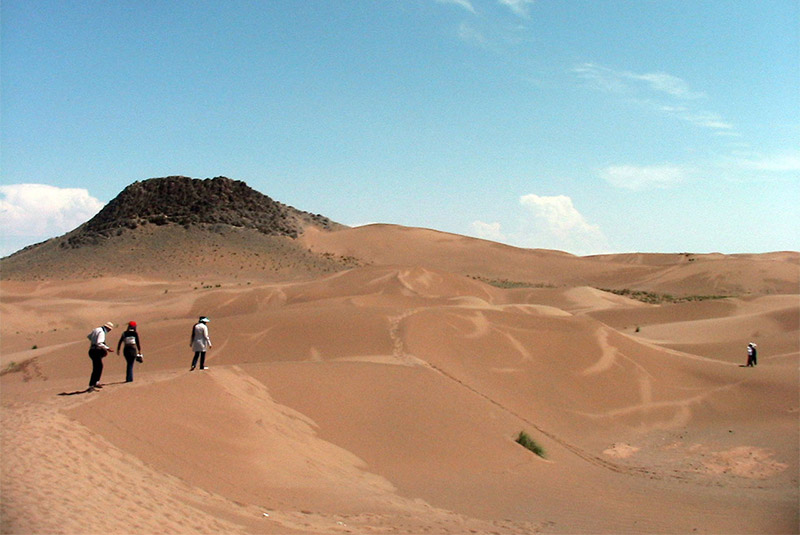
Rezaabad Desert is located 200 km southwest of Shahrud and 100 m from Rezaabad Village in the Khar Turan National Park area of Semnan Province. Sand dunes with various shapes, nomadic tents, domed adobe houses, herds of camels, the clear sky with no light pollution are among the characteristics of this desert region. Rezaabad Desert has a part of high clay moorlands as well as another part which is a vast plain with sand dunes. Note that, for accessing this desert, there are two Rezaabad and Qaleh villages, both of which are the closest villages to the Rezaabad Desert. The animals of this piece of land that can be mentioned are the Asiatic cheetah, onager, bustard, and Iranian ground jay.
In addition, before the construction of the current houses of Rezaabad Village, this place was a Qeshlaq (Winter village) for the nomads of Choobdari or Chowdari Clan of Afghan Clans that they migrated from Herat to the edge of the desert; although, they are still in Rezaabad Village, living there in their tents. In this respect, this village is a perfect example of a desert village. The souvenirs of this village are made from the wool of camel, goat and sheep; and are the products such as sangseri hats, woolen bracelets, handbags, rugs, and scarves all of which are woven by the locals. Also, the cuisines of this region are kotlet-e shir, ghorouti, and kam-e joosh.
| Suggestion: Iran’s Top 10 Seas and Lakes
12. Karakal Desert
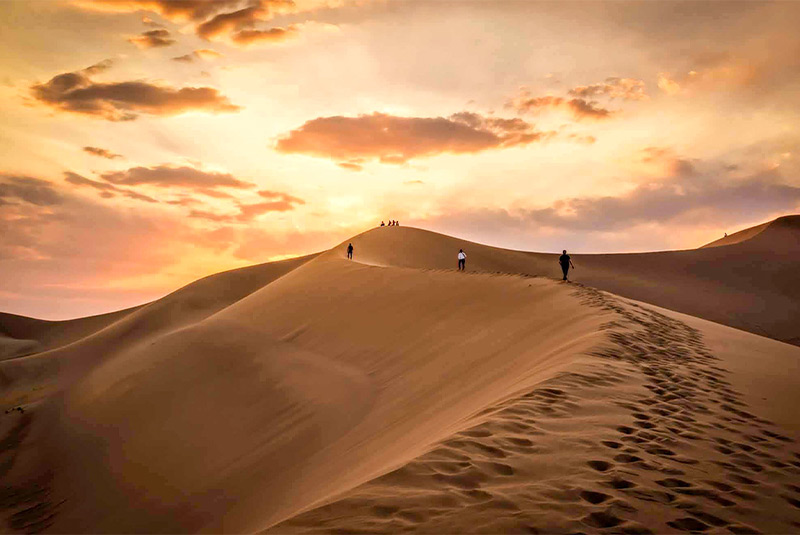
Caracal Desert is also known as the Sadegh Abad Desert, this desert has been the habitat of an elegant cat called caracal since the past and this is the reason for the fame of this desert in the center of Iran. The Caracal Desert in Yazd is also known as the Sadegh Abad Desert due to its proximity to the Sadegh Abad Village in Yazd Province.
Caracal is the ancient Persian name of a cat that lives in the Caracal Desert, and this is the reason why this desert was named. Of course, the modern name of the caracal cat is "black-eared" and this animal is one of the 6 species of wild cats that live in Iran; apart from Iran, this cat also lives in Africa. The caracal is also known as the desert lynx and the Persian lynx (the Persian term is black-eared which is aforementioned).
| Suggestion: Top 20 Most Beautiful Waterfalls in Iran
13. Hajj Ali Qoli Desert
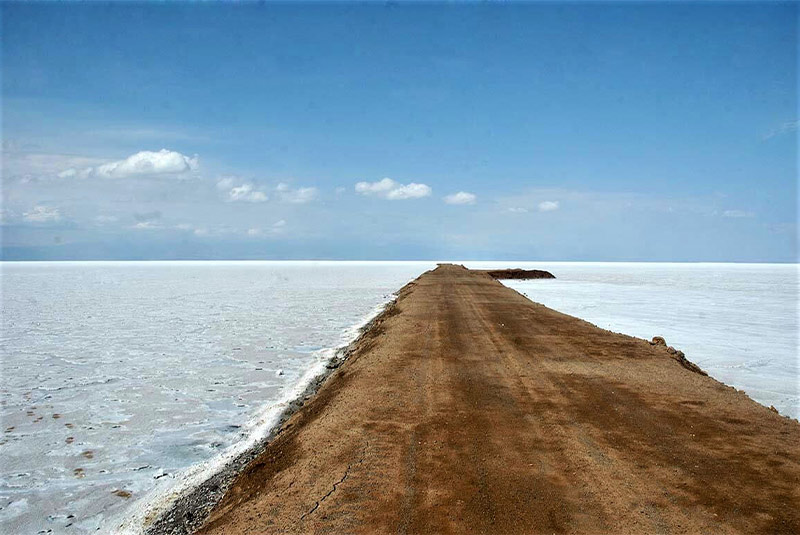
Haj Ali Qoli desert basin is the smallest watershed in Iran with an area of about 18 thousand square kilometers and it is located in the depression between the heights of Alborz and Horst Torud - Chah Shirin, which separates it from the salt desert. The location of the Haj Ali Qoli Desert in the south of the Alborz mountain range and adjacent to the dry plains of central Iran, away from moisture centers, and local dry winds, has placed it among the regions with a dry climate. Also, this desert is located in Semnan Province.
14. Abuzeydabad Desert
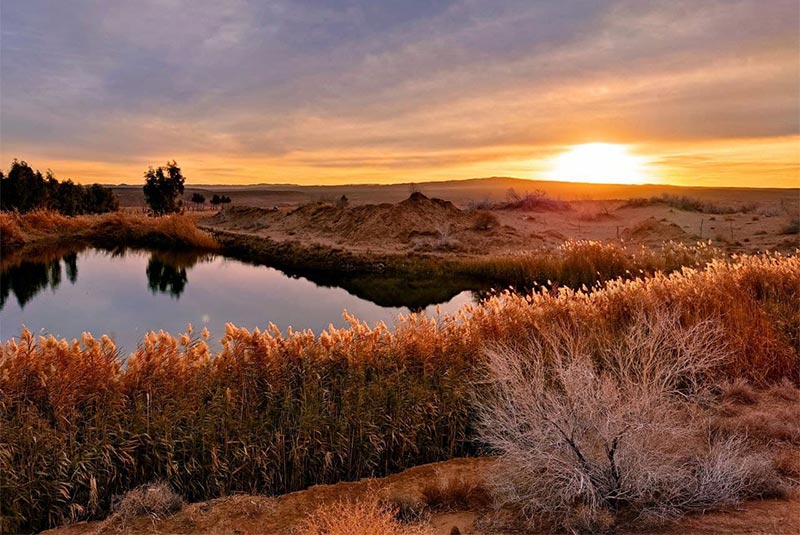
There are special and spectacular deserts around Kashan. One of these exceptional and beautiful deserts, which is located near Kashan, is the Abuzeydabad Desert.
Abuzeydabad Desert, like other deserts, hides its peak beauty in deep silence, next to its hot sand dunes and its unique wide views. Abuzeydabad Desert is one of the most popular desert destinations for tourists interested in these types of attractions, along with other desert attractions in Iran, such as the Maranjab Desert and the Mesr Desert. Abuzeydabad is the capital of Iran's ancient dialects, and the culture of the people of this region is one of its most important tourist attractions. Due to the more difficult access compared to the Maranjab area, this region has remained untouched. Therefore, the wildlife of this area has relatively better security than in the Maranjab area.
15. Rig-e Zarin
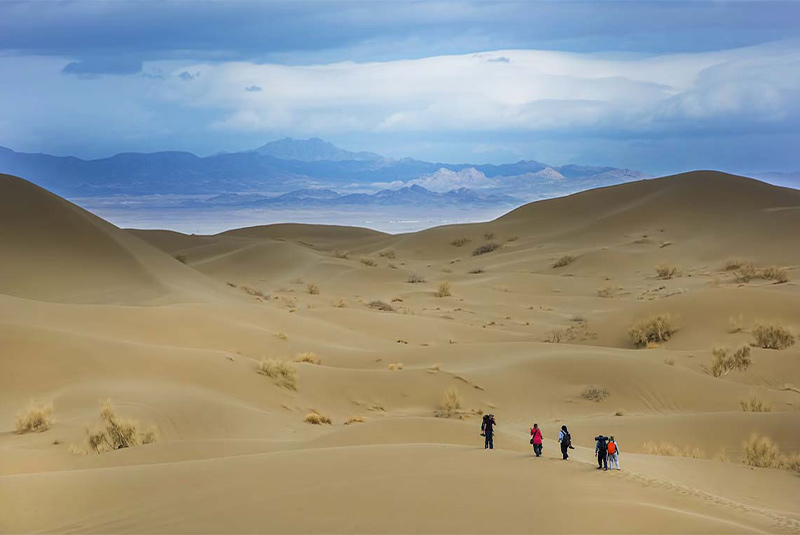
Rig-e Zarin or Moghestan Desert is one of the most spectacular deserts in Iran, which is located 80 km north of Bafq Desert (Daranjir) in Yazd Province. In the northern part of this desert, Haji Abad Zarin heights are located, which has a northeast-southwest direction, and the southwest part of this desert is covered by salt domes. Moghestan Desert is actually divided into two parts, north and south, by the heights that pass through it. This desert has very beautiful fine sands that stretch from north to south and are awesome for walking on them and taking pictures. Note that, Moghestan has many swampy areas located in its south.
Finally!
Eventually, it is worthy of note that, stargazing is the most prominent activity in all deserts along with many other interesting ones. Accordingly, it is highly recommended to visit astronomy websites to find out the exact date and time of cosmic events and astronomical showers before traveling to deserts in order to plan for them which can certainly double the joy of your trip, as they are the most marvelous attraction of desert regions. To do so, most of the deserts in Iran have numerous accommodations and ecolodges which can make your experience to be memorable besides their kind and hospitable hosts.
One of the necessary information about desert areas is their temperature. You may know that in desert areas, the temperature difference between day and night is so great, as though during the day it feels like you are burning, while at night you have to sit near the fire to withstand the conditions. Consequently, since the temperature during the summer day is very high, the temperature at night will drop several degrees, however, it will still be hot at night. So, the best time to travel to desert areas is in fall and winter, when the temperature of the entire region decreases, both during the day and at night.


Comment
Leave a Comment